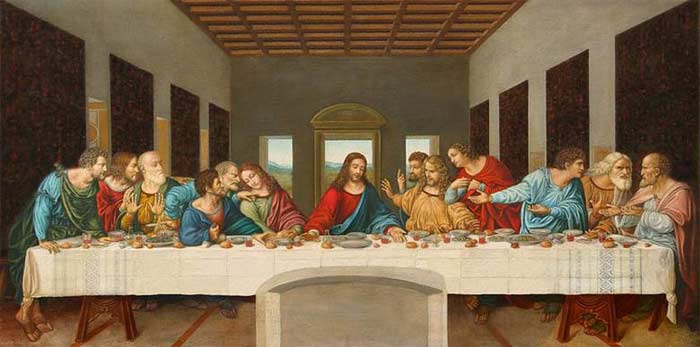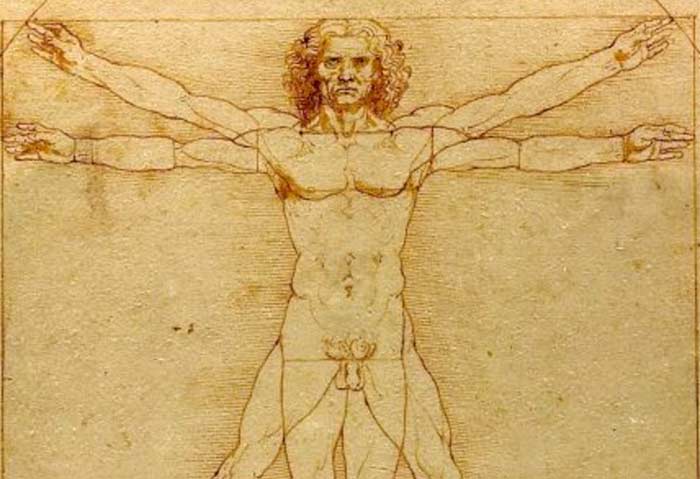Leonardo di Vinci and his Thoughts on Art
Leonardo di Vinci - the first Renaissance Ma

Some of Di Vinci's famous artworks
Leonardo and his writings are worth a look.
Leonardo di Vinci, in his Thoughts on Art, Life, & Science, writes, “When beauty exists side by side with ugliness, the one seems more powerful, owing to the presence of the other.”
Ugliness and beauty are like night and day. He is talking about the power of contrast. Contrast makes artwork powerful although it may not always be judged either ugly or beautiful. Red roses against green foliage, a yellow sun surrounded by blue sky, and the glow of orange candlelight in a dark night are exciting to the senses because of contrast. Contrast brings powerful emotions to all works of art.
Leonardo di Vinci also says, “The first picture was a single line, drawn round the shadow of a man cast by the sun on the wall.”
Is Leonardo talking about cavemen art or maybe something more timely?
Maybe he implies that simplicity is a beginner’s best friend. Maybe he is telling us to learn to draw, to study perspective and notice how shadows are cast, to introduce colors one at a time and then experiment with hues and saturation levels. Practice the simple things before letting your art get really complicated and you will be a better artist for it.
Leonardo di Vinci, born in 1452, was way ahead of his time.
One of the most famous Early Renaissance characters, Di Vinci was into writing, drawing, painting, sculpture, poetry, music, engineering, science, theory, anatomy, astronomy, architecture, and other popular subjects of his day.
In case you need a refresher, here are a few facts about Leonardo di ser Piero da Vinci:
1. He painted the most famous painting in the world. You might have heard of it. The Mona Lisa? No other artist has ever been able to re-create her famous smile.
2. Leonardo di Vinci also painted the most famous and most reproduced religious painting of all time. The Last Supper is revered for its inspiring beauty and perfect design elements.
3. Di Vinci was ahead of other educated men when it came to looking to the future. Leonardo was drawing airplanes and designing flying machines before others dared to talk of such things. He was the first real Renaissance Man.

The Last Supper by Leonardo di Vinci
Leonardo Di Vinci started out young.
Born near Florence, Italy, Leonardo’s artistic talents were recognized early on. He became a “studio boy” at age fourteen and went to work for the famous painter Andrea del Verrocchio.
With Verrocchio, Leonardo studied everything from pigments and paints to human anatomy. During this time, Di Vinci produced many drawings of dissected cows, birds, monkeys, bears, frogs, and even humans. He was very interested in emotion, the expressions of rage on a human face, and even facial deformities.
Di Vinci kept notebooks and journals that still exist today.
In one of his notebooks, Di Vinci wrote, “You must depict your figures with gestures which will show what the figure has in his mind, otherwise your art will not be praiseworthy.”
He added, “The worst evil which can befall the artist is that his work should appear good in his own eyes.”
I think he meant that when we get to the point of thinking our work is good, we quit trying to get better and our work grows stale. As artists, we should never become complacent. Look for inspiration and you will find it!
A master in the Guild of Saint Luke
By his early 20’s, Di Vinci had worked beside many of the best artists of his time and became a master in the Guild of Saint Luke. Although his dad set him up with a studio, Leonardo continued to work for Verrocchio.
At Verrocchio’s, Leonardo was exposed to many different mediums and disciplines besides painting and drawing. He studied chemistry, metal working, drafting, plaster molding, leather, wood-working, and modeling with the most educated and forward thinking men of his time.
Making a name for himself - Leonardo's fame grows throughout Italy and beyond
By age 26, Leonardo was receiving independent commissions and before long moved up in the world of 15th Century Art. He traveled to Milan and Rome, doing work for various nobles, aristocrats, and the clergy.
In 1485 at age 33, Di Vinci traveled to Hungary to do a painting for the king. While there, Di Vinci worked on many projects including designing floats for parades and backdrops for banquets.

Detailed anatomy drawing by Leonardo Di Vinci
13,000 pages of drawings and notes by Leonardo di Vinci still exist.
Di Vinci kept journals throughout his life, leaving us over 13,000 pages of drawings and notes. A philosopher, Di Vinci wrote a lot about the mind, science, art, nature, engineering, and travel, but very little about his personal life. In Di Vinci’s notebooks we find everything from grocery lists to sketches of plants and rocks but nothing about his lovers, desires, or dreams!
In one journal, Di Vinci says, “I have myself proved that it is useful when you are in bed in the dark to work with the imagination, summing up the external outlines of the forms previously studied or other noteworthy things apprehended by subtle speculation; and this is a laudable practice and useful in impressing objects on the memory.”
Sounds like Leonardo spent many lonely nights thinking about art while laying awake in bed. He surely had bouts of insomnia or at least periods when his brilliant mind could not relax enough to sleep.
War brings out the engineering side of Di Vinci.
By 1500, at age 48, Di Vinci was in Venice designing military equipment. Besides painting, he went on to become a mapmaker, helped build a dam, and did other labor intensive jobs.
In 1503, back in Florence, Leonardo began his portrait of Lisa del Giocondo, the model for the Mona Lisa. He was in no hurry to finish the painting and worked on it for over 15 years!
Di Vinci studied the natural world and did detailed drawings.
He wrote, “To such an extent does nature delight and abound in variety that among her trees there is not one plant to be found which is exactly like another; and not only among the plants, but among the boughs, the leaves and the fruits, you will not find one which is exactly similar to another.”
One thing is for sure, there has never been another painting quite like Di Vinci’s Mona Lisa. Her smile is as unique as anything that exists in nature and people are still trying to figure out what she is thinking to this day.
Just like Leonardo Di Vinci, we all need to take our time. Slowing down, developing a technique, looking at the details, and enjoying every brush stroke help us create our own masterpieces.
Thanks for reading my art blog. Jan.
Sources:
https://www.freeclassicebooks.com/da%20vinci%20leonado/Thoughts%20on%20Art%20and%20Life.pdf
https://en.wikipedia.org/wiki/Leonardo_da_Vinci
Buy original art work now!
______
© 2022 - 2025 by Janice Boling, artist - all rights reserved.